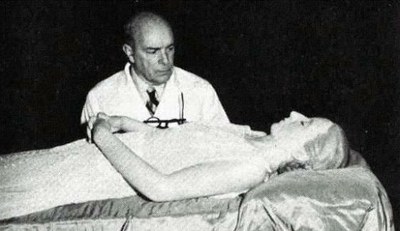Nursing Care of Dead Body:How A Dead Body Should Be Nursed is being explored in this article.The heading ‘Nursing a Dead’ sounds absurd. How and why a dead body should be nursed. But in practical sense it means the nursing procedure adopted for persons who die on hospital bed. There are certainly some specific duties of a nurse towards a dead body. The main aim is to protect other patients from the sight of dead which might frighten them and also to prepare for removal of dead body.
Details of Nursing Duties And Care of A Body After Death
- If a patient dies on bed immediately cover the patient by a cloth from head to toe.
- Arrange to remove the body to a separate room or corridor with bed sheet lying on it.
- This is done when the doctor declares him dead. But if the patient dies before a doctor reaches to attend him, keep the dead body till the doctor attends on him and signs a death certificate. Before the certificate or before the doctor attends, never shift or remove the dead body.
- Report the time of death to sister-in-charge, if available.
- Remove all apparatus and equipment before removing from ward to a separate place.
- Close the eyes with tip of finger
- Never be irritated on mourning relatives. Console them, request them to be silent so that other patients are not disturbed.
- If the relatives have not reached, wait till their arrival to do other righteous procedures.
- If they are present take their permission to do certain righteous procedures.
- If the relatives wishes to take the body give them a copy of the death certificate. In official crematorium a death certificate is always required for cremation.
- When the relatives take away the dead body keep a note with signature of relatives taking the dead body in death note-book or dead body register. This has medicolegal importance. It should never be forgotten.
- Hand over all personal belongings or jewellery or money or documents to the relatives.
- If the relatives allows to do certain rights then do it carefully and gently as if he is living. Put on a gown and remove patients clothes, wash face, neck and ears. Pack the nostrils and mouth with cotton or gauze. Tie a bandage under chin to keep mouth closed. Close the eyelids if open. Give a cold sponging over body and face. Pack the rectum and anus with cotton. If there is wounded or operation incision cover it with clean dressing or gauze, and apply adhesive plaster to fix it.
- Put on patients clothes as given by relatives Fold sheet tidy around body. Hand over body and remove gown.Clean hands with soap.
Creating a tabular guide for the nursing care of a deceased body involves outlining the necessary steps and precautions in a clear, organized manner. I’ll provide you with a basic format which you can customize according to specific protocols or guidelines you might be following.
Nursing Care of a Deceased Body: Tabular Guide
| Step | Description | Notes |
|---|---|---|
| 1. Confirm Death | Verify the absence of vital signs. | Consult a physician for legal death declaration. |
| 2. Respect and Privacy | Close curtains or doors, maintain dignity. | Speak respectfully; the body should be treated with the same respect as when the person was alive. |
| 3. Identify the Body | Ensure correct identification with tags. | Name, date of birth, and patient ID. |
| 4. Prepare the Body | Gently clean the body, if required. | Close eyes, position the body straight, place arms by the sides, close mouth. |
| 5. Remove Devices | Carefully remove tubes and catheters. | Dispose of these items properly. |
| 6. Dressing the Body | Dress the body in a gown or specific clothing if required. | Some cultures have specific requirements for dressing the deceased. |
| 7. Wrapping | Wrap the body in a shroud or body bag. | Follow institutional guidelines. |
| 8. Documentation | Complete necessary paperwork. | Death certificate, release forms, etc. |
| 9. Notify the Appropriate Parties | Inform the mortuary or funeral home. | Coordinate for body transfer. |
| 10. Support for Family and Loved Ones | Offer condolences, guide them to resources. | Provide information on grief counseling, if available. |
| 11. Infection Control | Follow standard precautions. | Use gloves, and handle with care to prevent any spread of infection. |
| 12. Environmental Cleaning | Clean and disinfect the room. | Follow institutional protocols for cleaning. |
This guide can be adapted based on the healthcare setting, cultural practices, and legal requirements. It’s crucial to follow the specific guidelines and protocols of your institution or local health authority.
Conclusion:
Nursing care for the dead body involves more than just physical actions; it is a meaningful and compassionate practice that respects the dignity of the deceased and supports the bereaved. By adhering to proper protocols, showing empathy, and providing comprehensive care, nurses can make a significant impact during this sensitive period.
